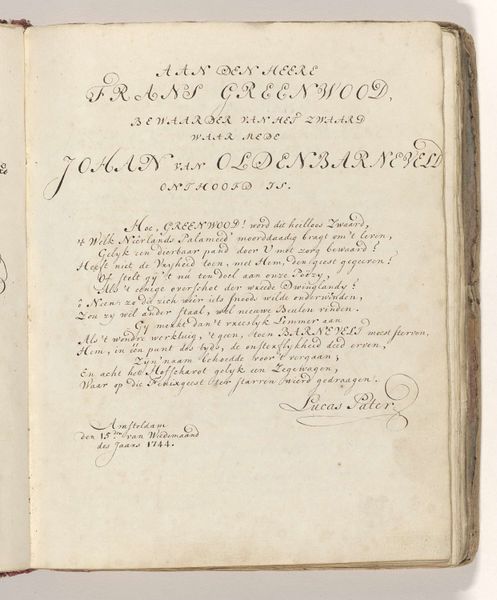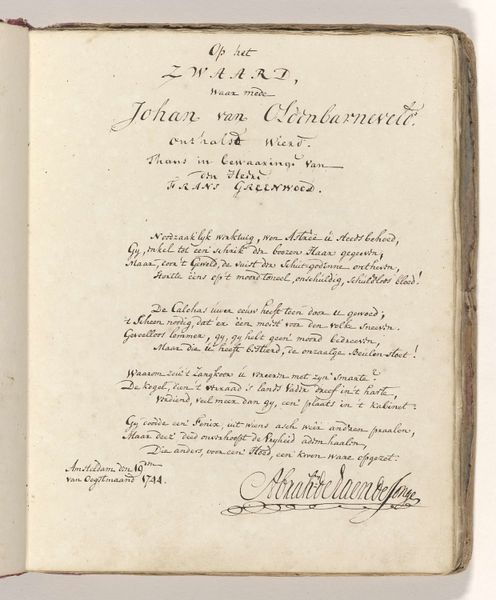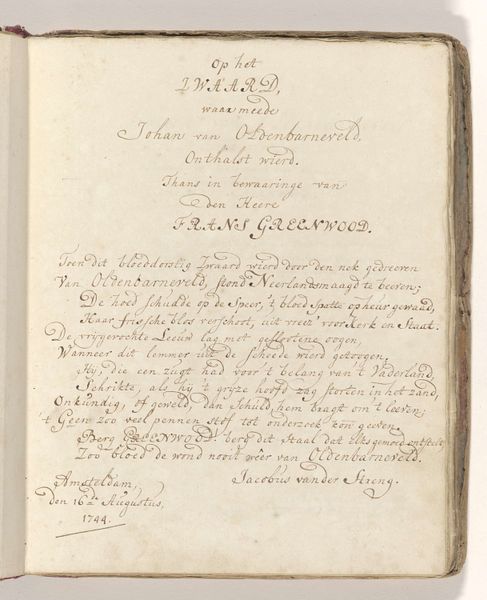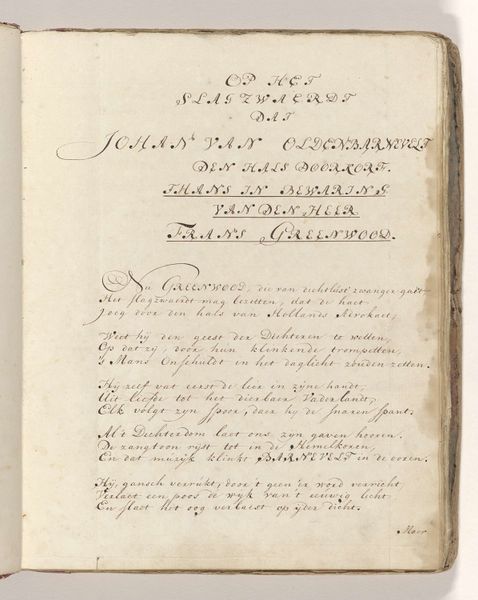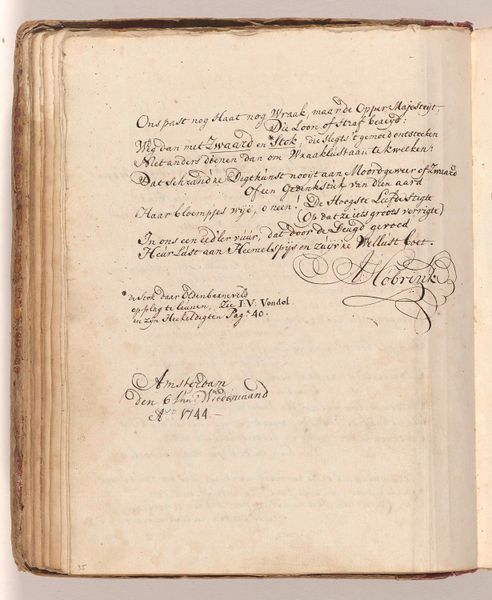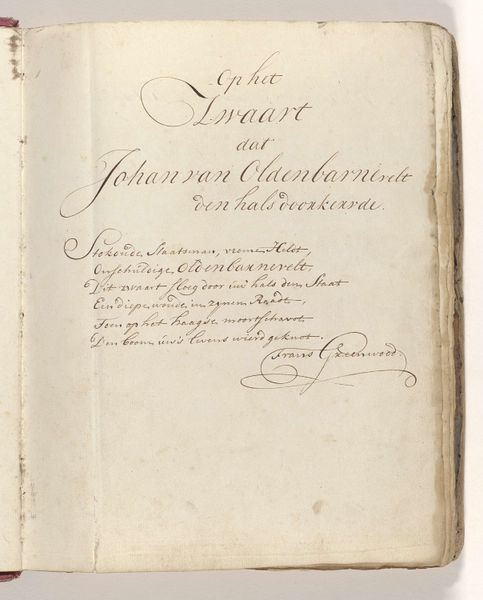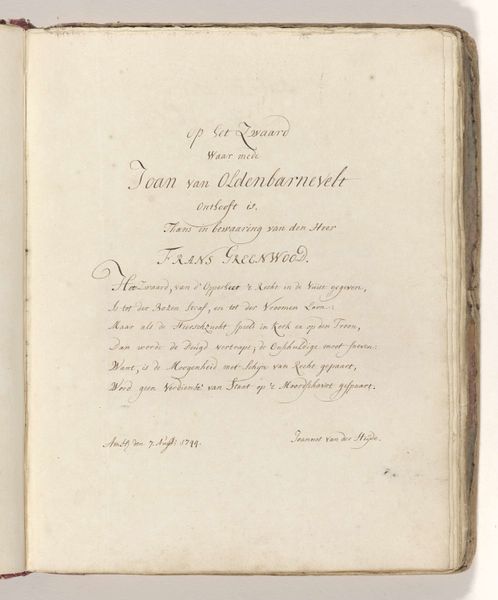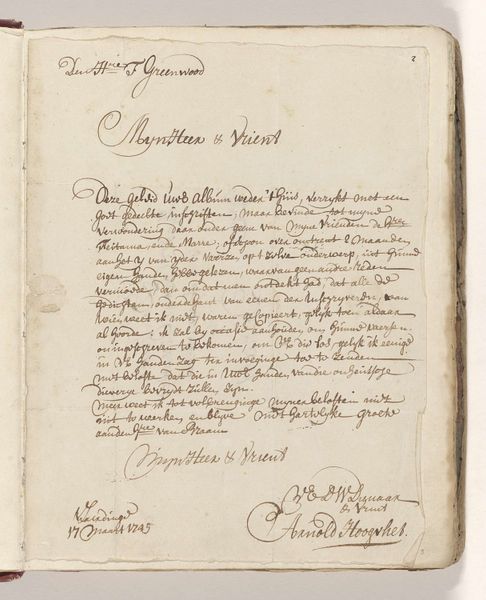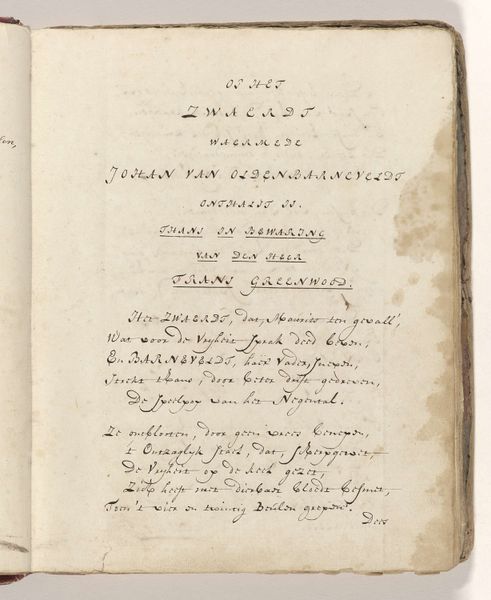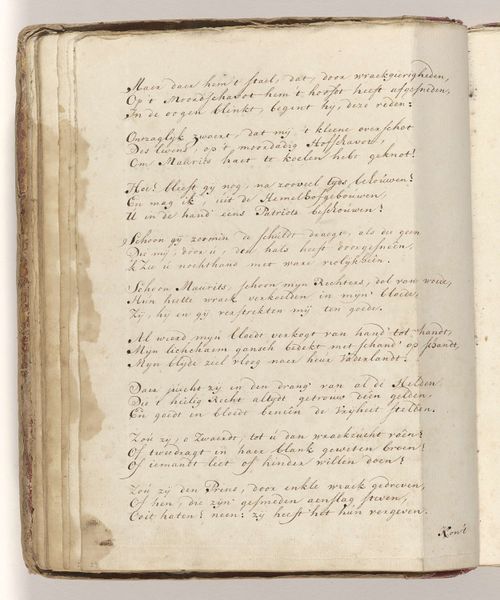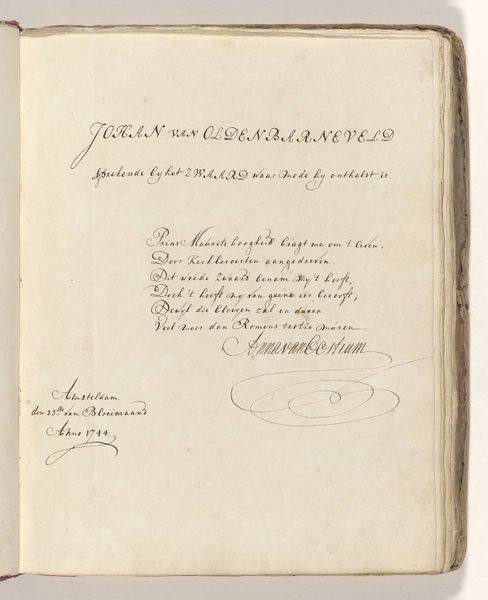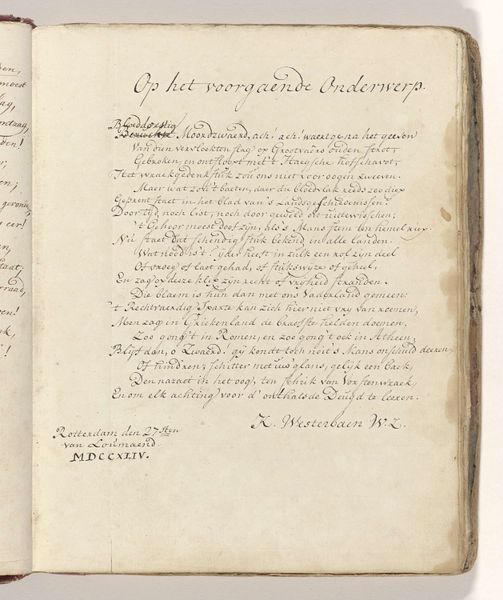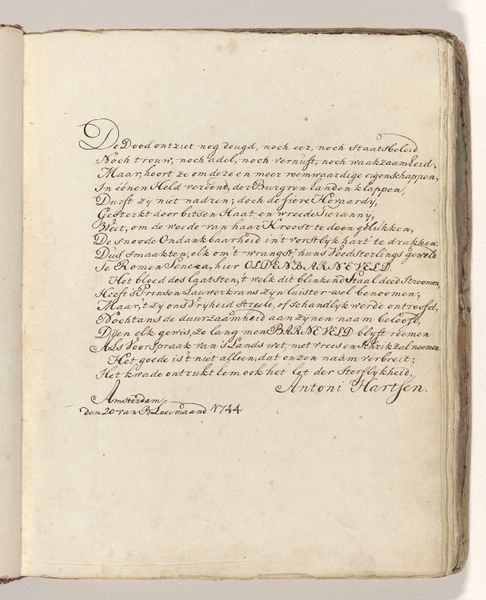
Gedicht op het zwaard waarmee Johan van Oldenbarnevelt in 1619 zou zijn onthoofd Possibly 1744
0:00
0:00
drawing, paper, ink
#
portrait
#
drawing
#
dutch-golden-age
#
paper
#
11_renaissance
#
ink
#
history-painting
#
calligraphy
Dimensions: height 275 mm, width 220 mm
Copyright: Rijks Museum: Open Domain
This is a page from a book made in Rotterdam in 1754 by Wouther de Kemp, bearing a poem about the sword used to behead Johan van Oldenbarnevelt in 1619. De Kemp’s poem evokes the political turbulence of the Dutch Golden Age. Oldenbarnevelt, a leading statesman, was executed for treason amidst religious and political strife. This book, produced over a century later, reflects on the legacy and meaning of that event. The poem itself serves as a historical commentary, using vivid language to conjure up themes of justice and national identity. To fully appreciate this work, the historian must consider the complex interplay of the Dutch Republic’s political institutions, religious factions, and economic interests. Examination of pamphlets, legal documents, and personal correspondence from the period would shed further light on the social conditions that shaped both Oldenbarnevelt's fate and the later artistic interpretation of it. In this way, the poem becomes a window into the ongoing debates about power, freedom, and the burdens of history.
Comments
No comments
Be the first to comment and join the conversation on the ultimate creative platform.
